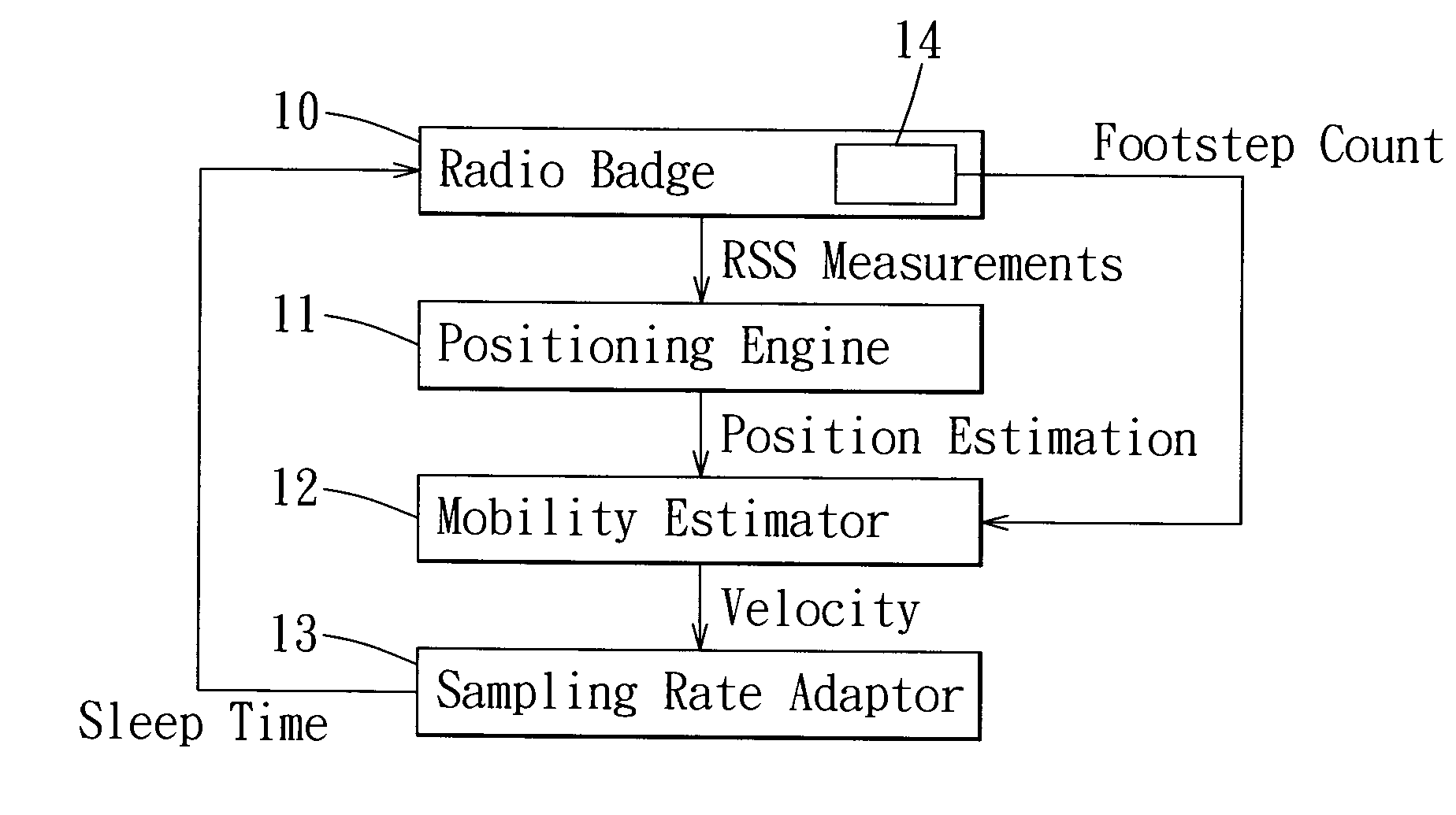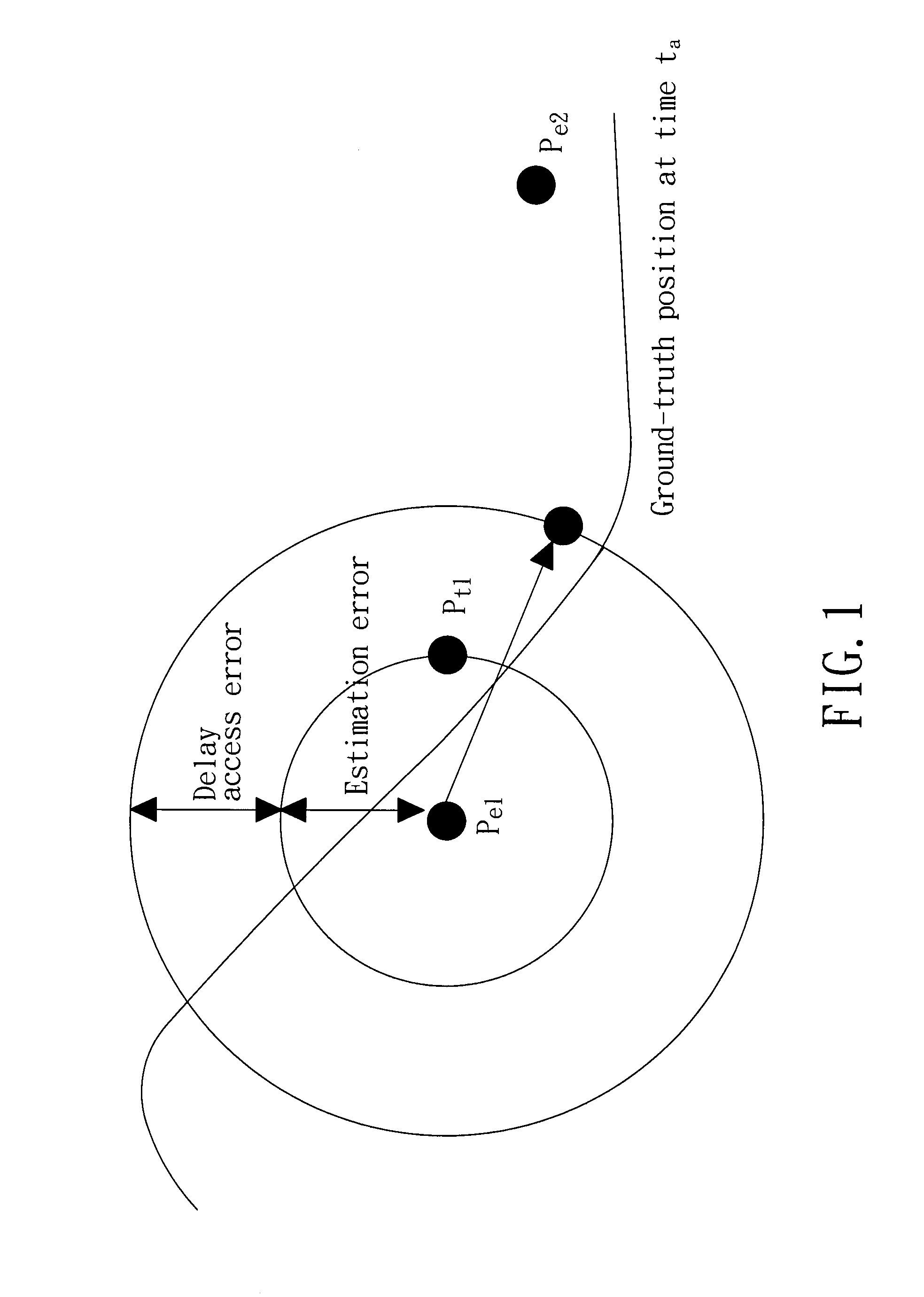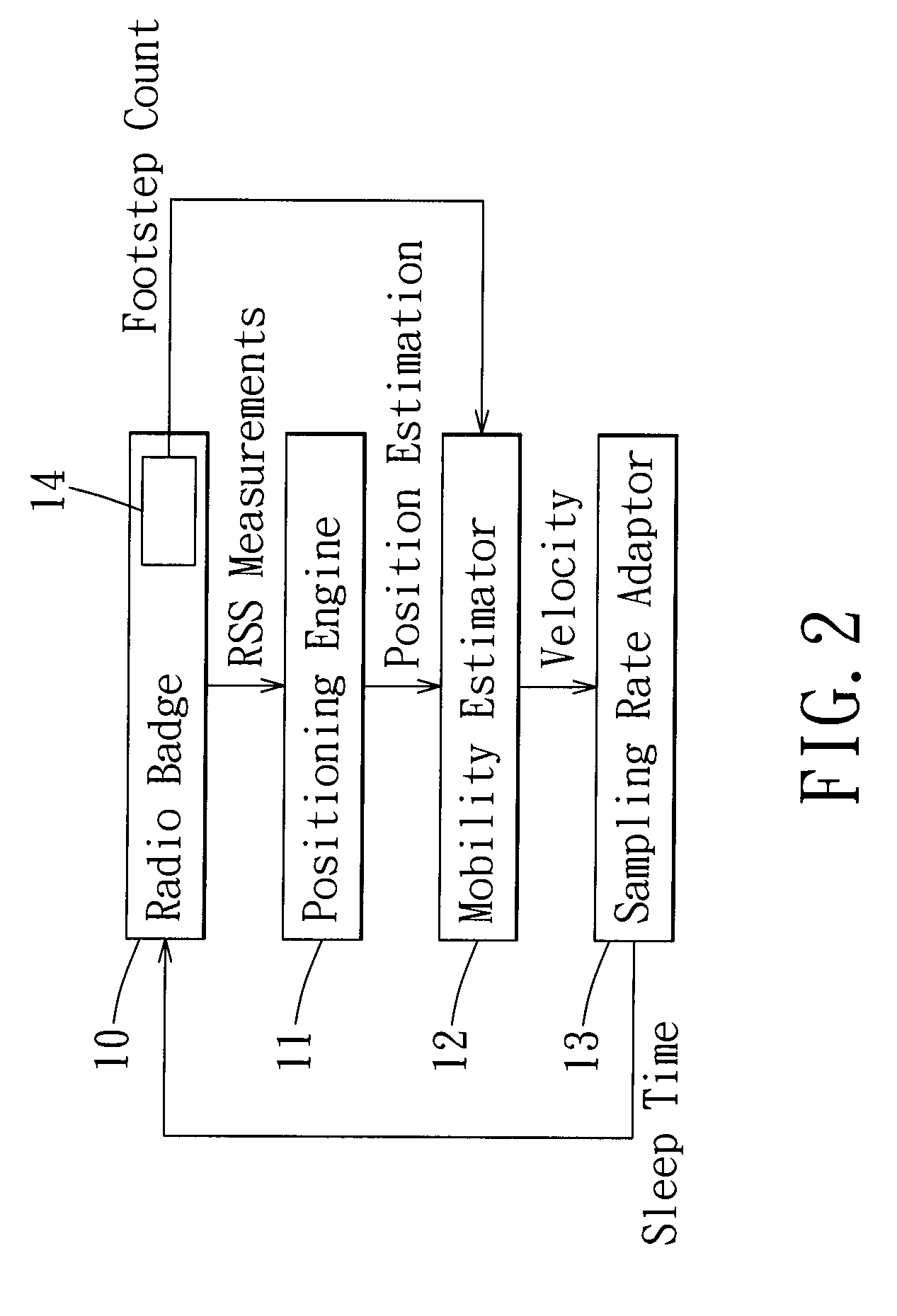Energy-efficient indoor localization system and a method of reducing power consumption of a radio badge in the indoor localization system
a technology of indoor localization system and radio badge, which is applied in the direction of distance measurement, programme control, instruments, etc., can solve the problems of inherently inaccurate prediction of moving velocity and particularly significant adverse effects, and achieve the effect of reducing the power consumption of the radio badg
- Summary
- Abstract
- Description
- Claims
- Application Information
AI Technical Summary
Benefits of technology
Problems solved by technology
Method used
Image
Examples
Embodiment Construction
[0017]In formulating the problem to be solved by the present invention, it is assumed that, given a tracked target, a tolerable amount of positional error measured in distance may be specified for a particular application. The positional error is defined as the difference between the actual (ground-truth) position and that reported from a positioning engine.
[0018]Referring to FIG. 1, overall positional error in a localization system comes from two error sources. The first error source is the estimation error from a positioning engine when the positioning engine calculates the position of a tracked target. The positioning engine may mistakenly determine that the object is at Pe1 instead of Pt1 because of measurement problems. The second error source is related to the freshness problem of a location sample within a sampling interval. Two consecutive position samples pe1 and pe2 are calculated for a moving target at times t1 and t2. If an application requests the position of this movin...
PUM
 Login to View More
Login to View More Abstract
Description
Claims
Application Information
 Login to View More
Login to View More - R&D
- Intellectual Property
- Life Sciences
- Materials
- Tech Scout
- Unparalleled Data Quality
- Higher Quality Content
- 60% Fewer Hallucinations
Browse by: Latest US Patents, China's latest patents, Technical Efficacy Thesaurus, Application Domain, Technology Topic, Popular Technical Reports.
© 2025 PatSnap. All rights reserved.Legal|Privacy policy|Modern Slavery Act Transparency Statement|Sitemap|About US| Contact US: help@patsnap.com



